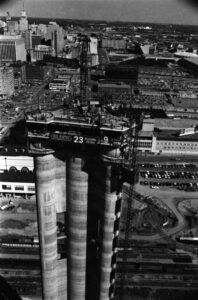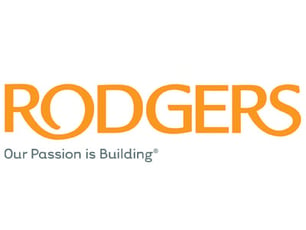Sundt Construction and Reunion Tower—The Story Behind the Building
 At Beck Technology, we pride ourselves on treating our clients as true partners. We don’t presume to have all the answers, and we believe that our clients provide unique insights that can only improve our construction estimating software.
At Beck Technology, we pride ourselves on treating our clients as true partners. We don’t presume to have all the answers, and we believe that our clients provide unique insights that can only improve our construction estimating software.
We value partnership so highly, in fact, that our flagship construction estimating software DESTINI Estimator was actually born out of discussions with our first-ever Estimator client, Sundt Construction. At the time, Sundt was using one of our old products, DESTINI Profiler. While they enjoyed Profiler, they wanted a more robust software to handle their estimating needs, and as a result, they approached us with their request. By working together, we were able to bring a revolutionary construction estimating software to the entire industry.
But Sundt’s innovative spirit is not simply the product of the modern age. Sundt has always been a pioneer in the world of construction, unafraid to blaze trails and try new things. From the very beginning as a tiny contractor founded by a Norwegian carpenter in the U.S. to their stunning work across almost every sector of the industry, Sundt has proven time and time again their ingenuity.
One of Sundt’s most outstanding projects was their work on Reunion Tower, an impressive landmark that makes up the skyline of our headquarters in Dallas, Texas. Their passion for innovation impacted the quality of Reunion Tower's construction for the better.
Sundt Construction and Reunion Tower
 Slip form structures going up in the early phases of a project.
Slip form structures going up in the early phases of a project.
Sundt established a name for itself in the 1970s by using its past work on missile silos to develop slip-formed concrete cores for high-rise buildings. Unlike conventional formwork, the slip form technique allows builders to raise a formwork vertically in one continuous process, requiring far less crane time and allowing the building to support itself on its core instead of depending on other surrounding structures. Slip-form construction was still a pretty niche market back then, and as a result, Sundt quickly developed a reputation as the go-to contractor for slip-formed concrete core projects.
Around this same time, many major cities like Seattle and Los Angeles were competing to define their skylines with extravagant revolving-deck towers. The city of Dallas waited late into the 1970s to commission Sundt to build Reunion Tower during an urban redevelopment project.
To stand out from structures like the Space Needle and Bonaventure Hotel, Reunion Tower's design called for an eye-catching 360-degree orb that could light up, standing out in the skyline all day and all night. Because of their work in slip-form works, Sundt was chosen to make Reunion Tower come to life.
Why Reunion Tower Was So Outstanding
Reunion Tower was a groundbreaking project, not because it set any world records like being the tallest building in the United States, but because of the standards it set for the entire construction industry.
 Reunion Tower in its early stages during the late 1970s.
Reunion Tower in its early stages during the late 1970s.Because Sundt used the slip-form technique to erect Reunion Tower, they were able to finish the project in record time: 68 days. Former Sundt CEO Dave Crawford—who worked on Reunion Tower as a project engineer—was quoted in a recent article as saying, “Our team was so good at ‘steering’ the tower upward, compensating for shifting weight and alternating directions for pours. That’s how we could guarantee tolerances of an inch, inch and a half for structures this size. Very few builders could do that at the time.”
Not only was Reunion Tower built in record time, but it was also built with record safety and quality standards. The slip-form technique that Sundt employed offers workers much more safety than conventional formworks. Slip-form structures require a smaller workforce on-site, and there is overall less congestion on the construction site because the slip-form technique doesn’t need as much scaffolding or temporary works. Additionally, slip-form structures require detailed planning before construction begins, and as a result, health and safety issues and guidelines are typically addressed right away.
Celebrating Our Client’s Wins
When Reunion Tower was completed in 1978, it primarily served as a tourist attraction where people could go up 50 stories to the very top and see all of Dallas. Today, Reunion Tower is still one of the most recognizable landscapes in Dallas, and now serves as a place not only for beautiful views, but also for education, dining, and entertainment. It also helped pave the way for new and innovative approaches to constructing future similar projects.

-1.png?width=112&height=112&name=image%20(4)-1.png)














